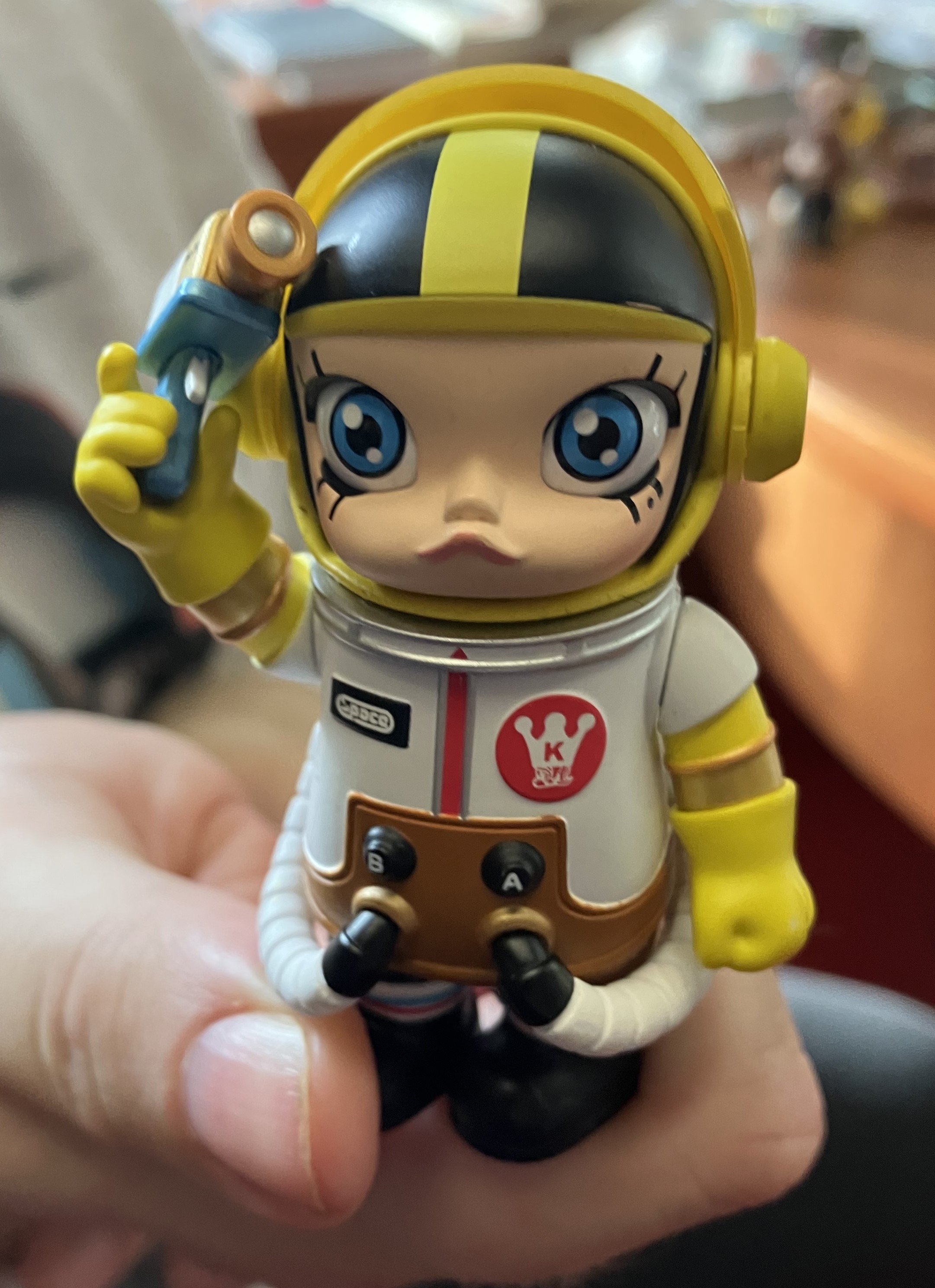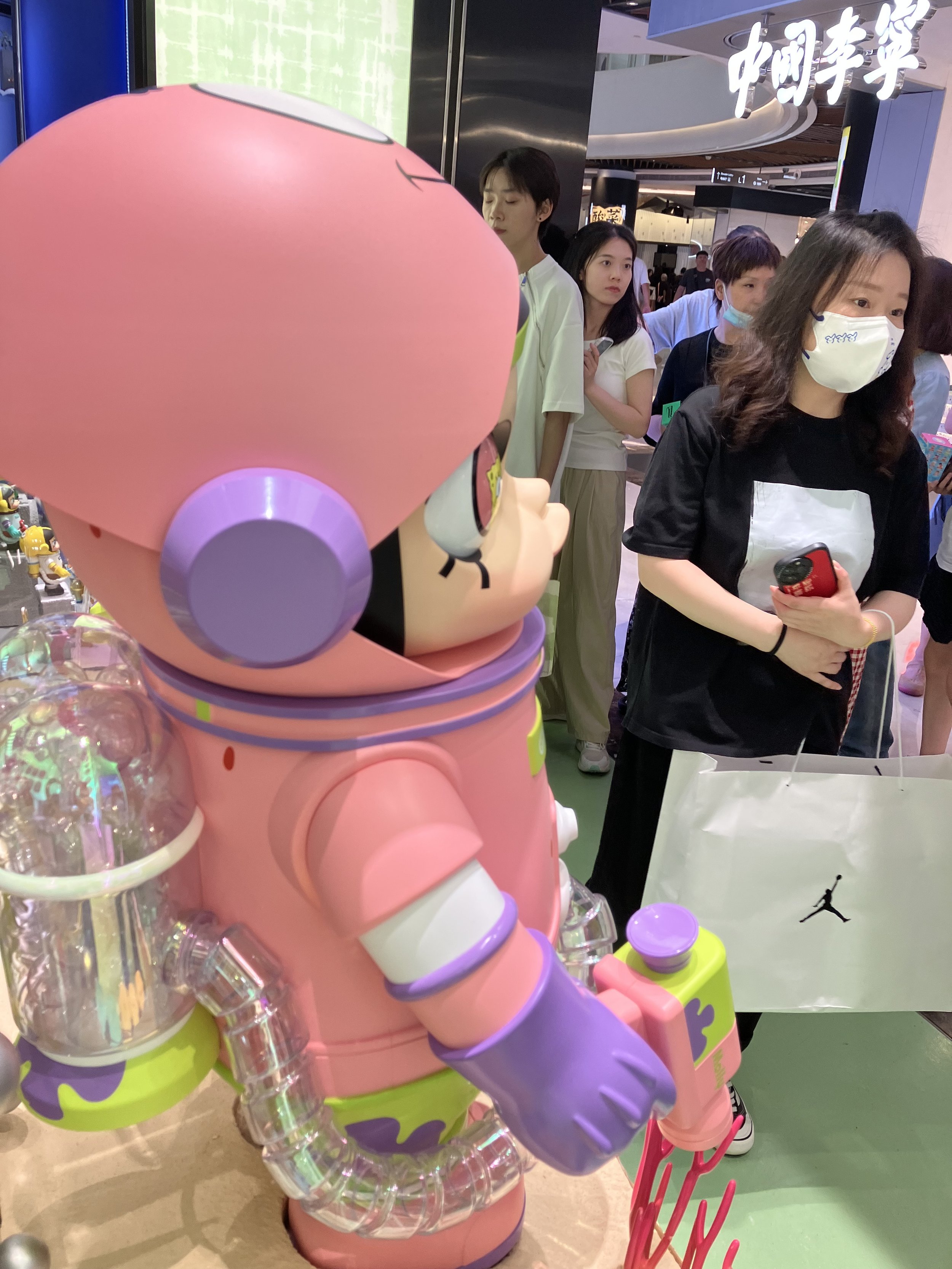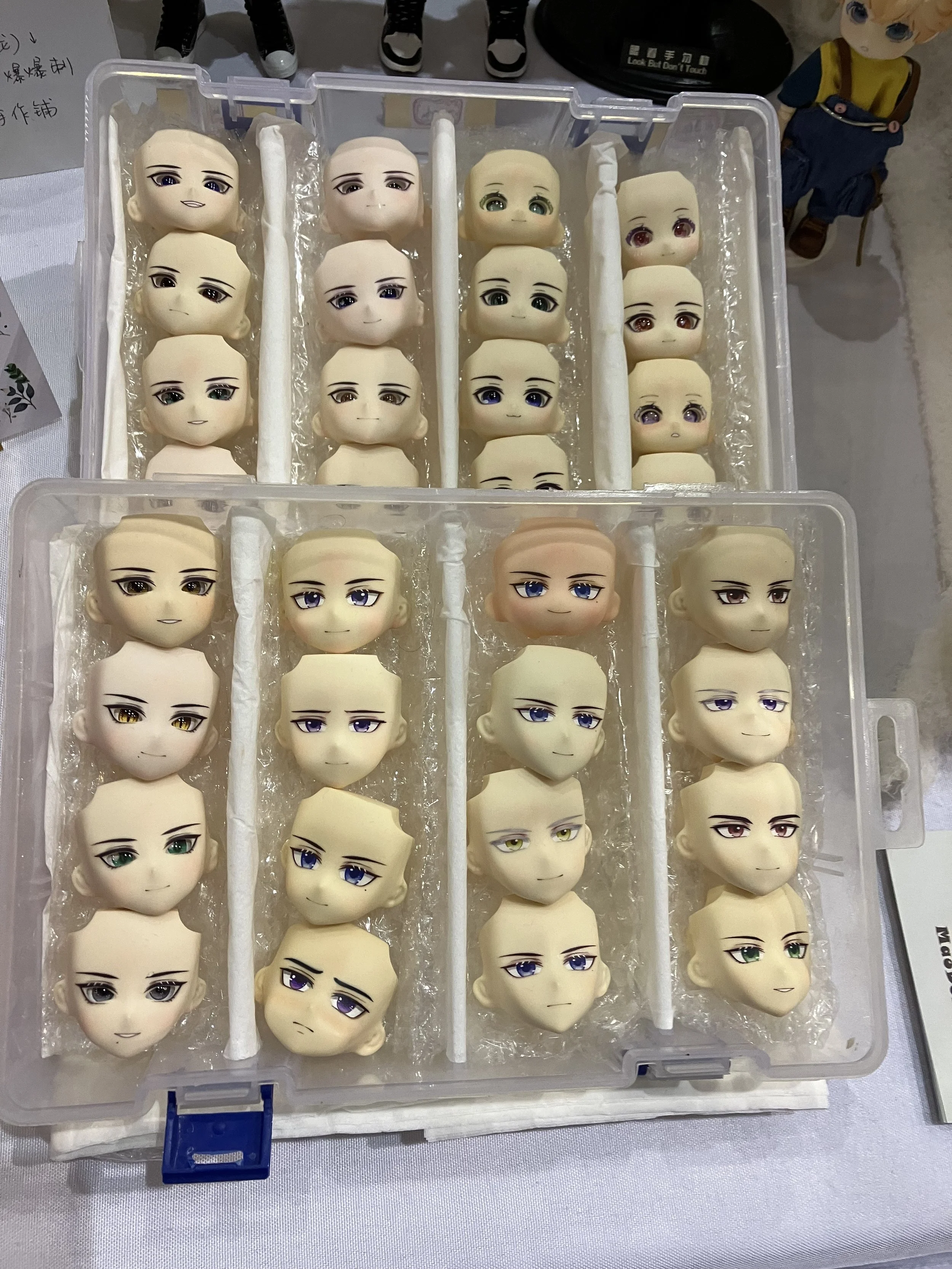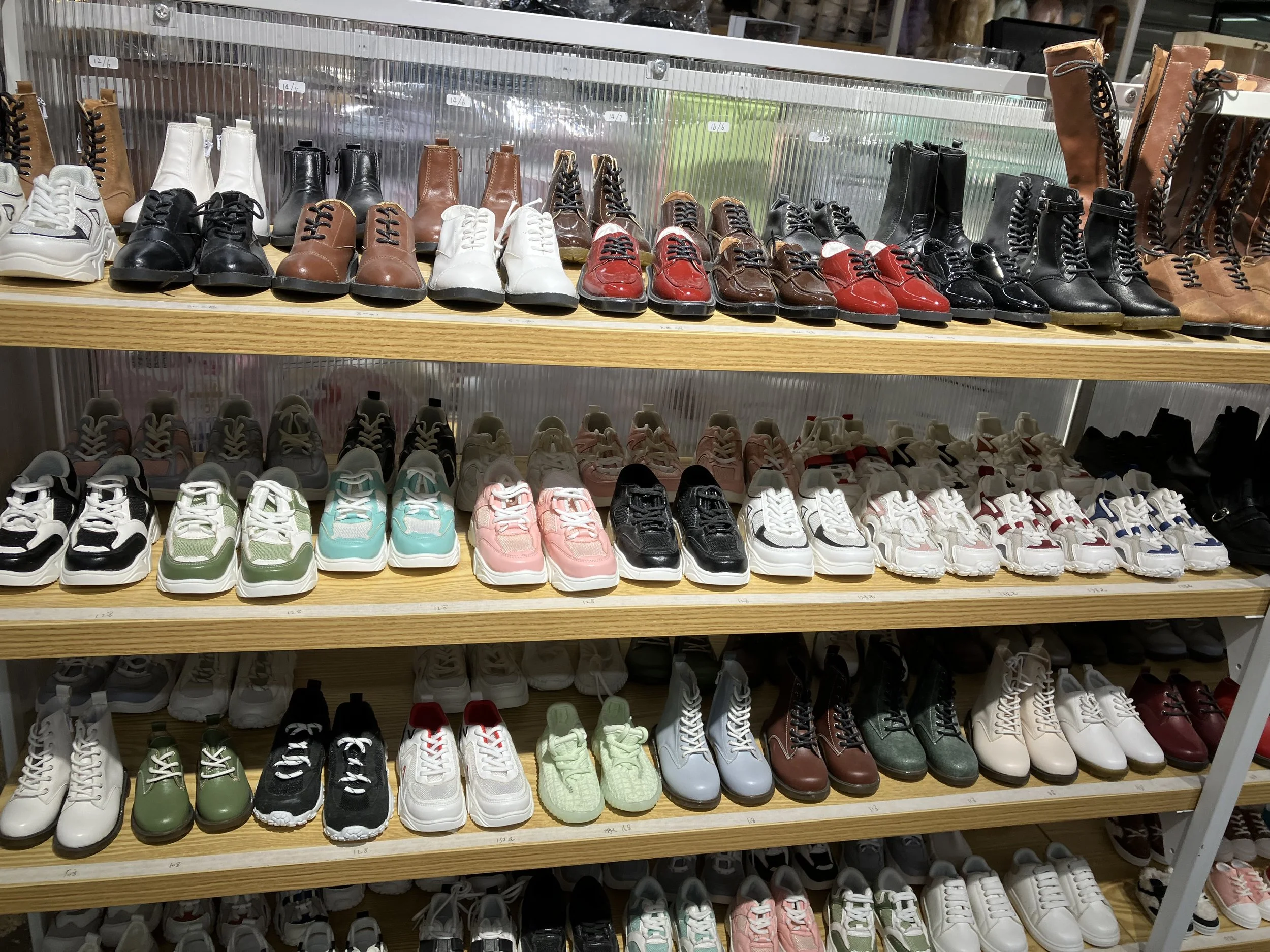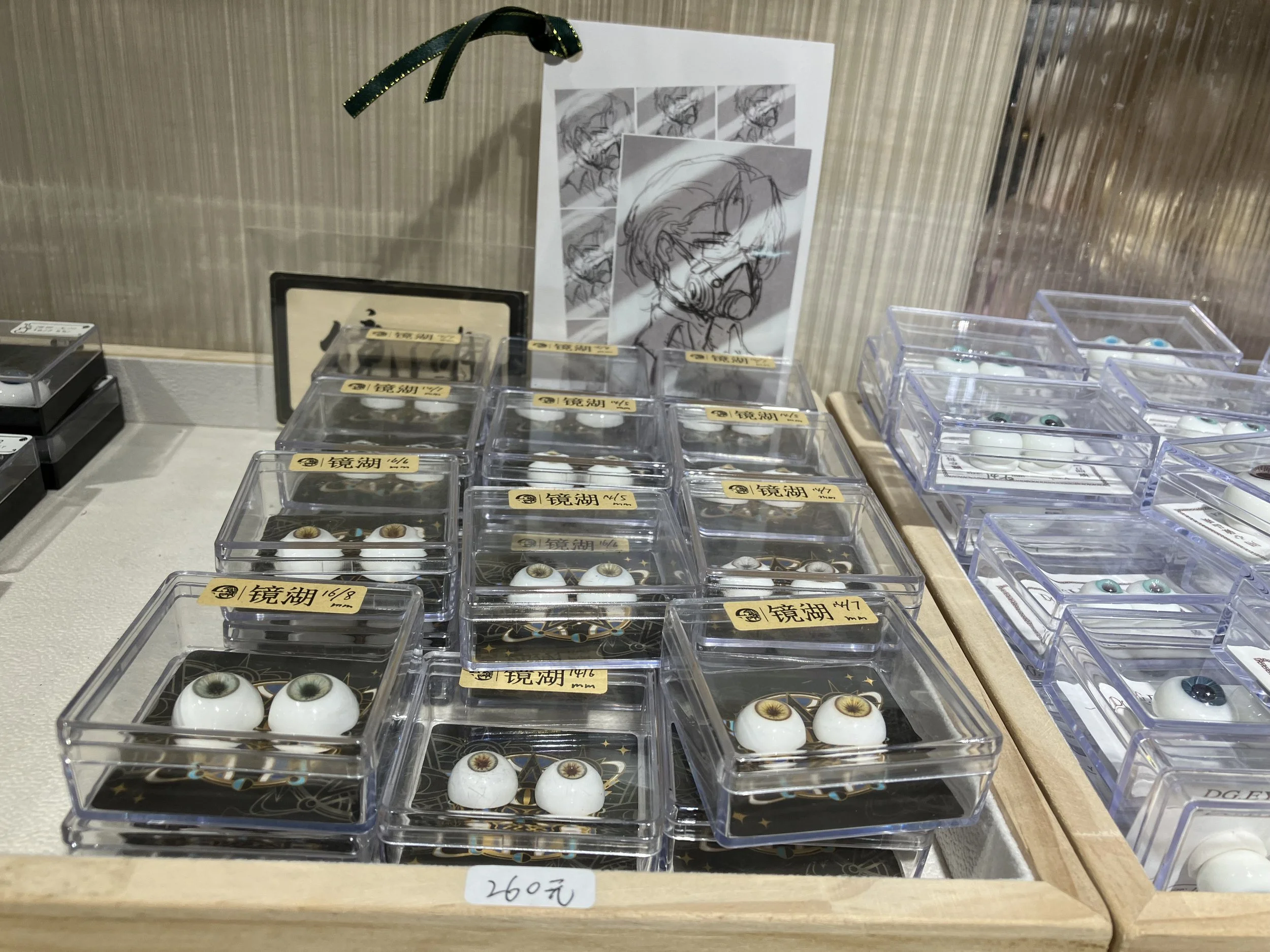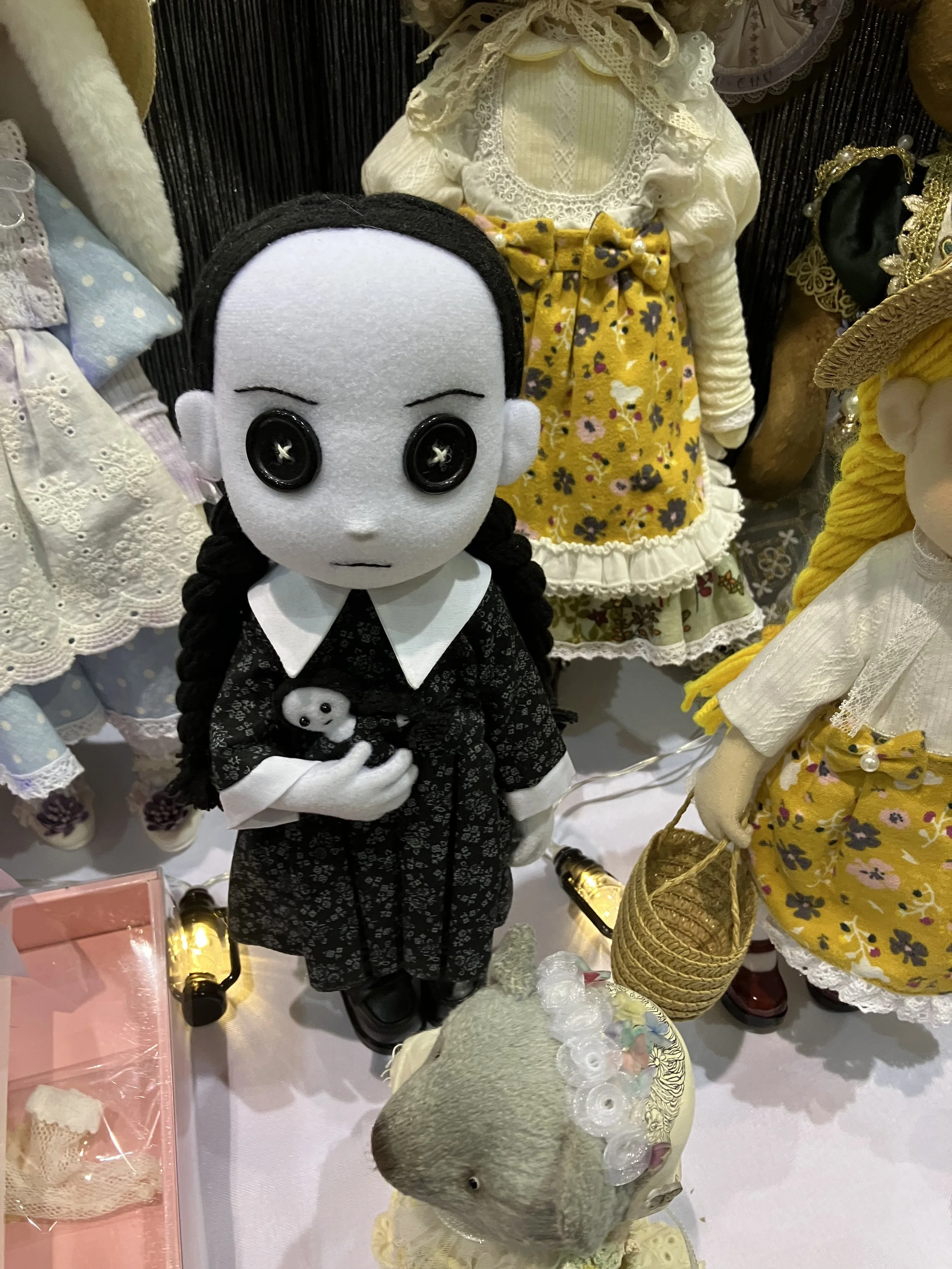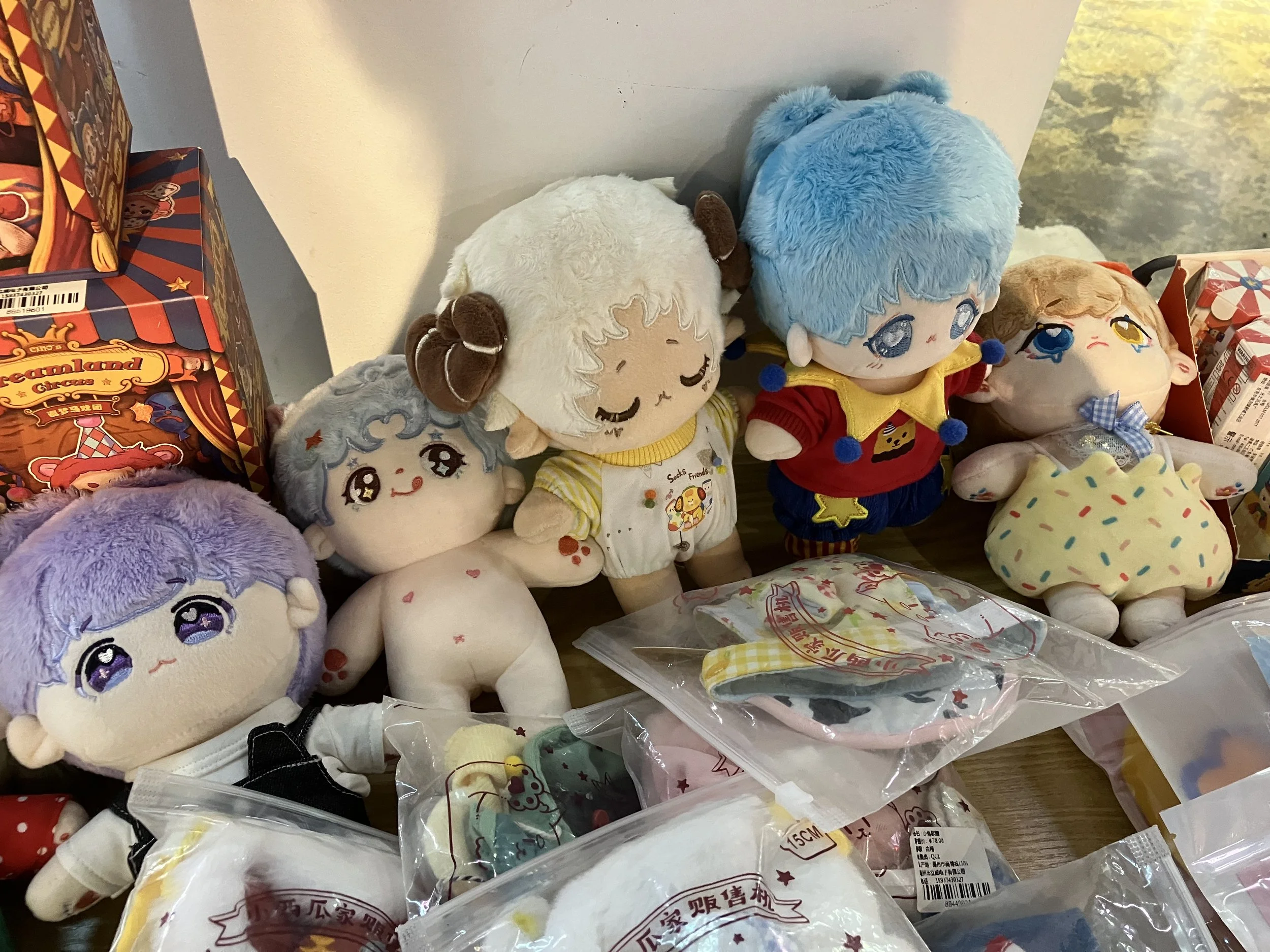Contemplating Molly: Notes on Pop-Mart Toys (Part One)
/“French toys: one could not find a better illustration of the fact that the adult Frenchman sees the child as another self. All the toys one commonly sees are essentially a microcosm of the adult world; they are all reduced copies of human objects, as if in the eyes of the public the child was, all told, nothing but a smaller man, a homunculus to whom must be supplied objects of his own size.”
“Where does he get those wonderful toys?”
image 1
Meet Molly. She was gifted to me during the seven weeks I spent this summer teaching, lecturing, and doing field work on fan culture in China. She is a product readily available at any of the Pop Mart stores in Shanghai. Across this post, I am going to explore some of the different ways we might make sense of Molly as an embodiment of Chinese fan culture.
Pop Mart, the Beijing-based toy store chain whose annual sales have gone from $22 million in 2017 to close to $100 million in 2022, offers a valuable starting point into understanding the role that media fandom plays in China’s emerging consumer economy amidst struggles over its national identity. As of 2023, Pop Mart has 200 brick and mortar outlets and over 1000 vending machines spread across 22 countries, mostly in Asia, all of which deal in character goods, particularly blind boxes. Pop Mart has now opened its first U.S.-based store in New Jersey and plans for more, including rumors of one in Los Angeles. When I first visited Beijing more than 25 years ago, the culture was still in transition from the uniformity of the Maoist years towards greater individuation, expressed through the expanded access to consumer goods. Its production was shifting from providing subsistence goods towards the introduction of goods designed for no purpose other than pleasure and joy.
image 2
Character goods represent a broad category of merchandise centering on fictional characters, whether in the form of plush (stuffed animals) or vinyl (figurines). Blind boxes represent a marketing strategy for franchise-based vinyl toys – one of a series of a dozen or so collectible figures are sold randomly, much like bubble gum cards, in boxes which tell you only which series is represented inside. If you want to collect them all, you need to buy more than a dozen blind boxes, and there are rare figures which require massive amounts of consumption to acquire. There is, however, a growing second hand market where you can buy precisely the figures you want to round out your collection – for a slightly higher price.
People have discussed blind boxes in terms of gambling, a sense of risk rather than security. Which Molly you get sometimes seems like a matter of fate and predestination: The toy gods meant for me to receive this one. I think a better analogy may be with strip tease: We peel off the layers of packaging, the cardboard box, then the translucent foil bag inside, each masking the next from view, until we finally see what is hidden within. Much like Youtube’s unboxing videos, the opening up of a Pop Mart box becomes a social occasion which culminates in the reveal as we finally see Molly in all of her glory. Only her pronounced innocence prevents us from seeing the strip tease dramaturgy in this process.
One of the most artful aspects of Pop Mart’s design is its capacity to construct compelling and coherent sets – groups of 10 or 12 figures that are clearly differentiated and yet belong together, which are familiar yet different. Sets are constantly being launched and removed from the market, so that each time you visit the store you find something new, and the whole gives you the pleasure of constant differentiation. Some of the lines are truly surreal, as in Foodie Molly, where, for example, she is shown wearing a fried egg on her head. And the packaging shows us the entire series, reminding us what we still do not have, creating a compulsion to buy yet another Molly if only so we could get the one which has so far eluded our acquisition.
image 3A
image 3b
To visit the company's Shanghai flagship store is to step into another world, one where pastel pink, lavender, or turquoise are the dominant colors, and where the toys are set against the backdrop of an imaginary spaceship. Many fans and collectors come just to get their photographs taken in this out-of-this-world setting, but once they are inside the shop, they succumb to the lure of the ever-shifting range of character-centered products. Pop Mart, thus, is selling fantasies of out-of-this-world escape for their Chinese fans. A Chinese mall in the era of social media presents one photo opp after another and as you walk through them, you experience the pleasure of both taking pictures and posing for pictures. Seeing and being seen is bound up with the retail process.
image 4
A high percentage of the merchandise represented unique toy lines, produced by more than 40 designers, each with their own unique aesthetics and appealing to distinctive types of consumers. Molly – designed by Hong Kong-based Kenny Wong – now represents their top-selling product line. The Pop Mart toys are displayed in museum-case configurations, designed to stress the work of their distinctive designers, their desirability, and their status as collector items. The focus on the personalities and styles of these designers gives purchasing the right Pop Mart toy a feel of connoisseurship which depends on our own expertise and mastery. We know what we want in multiple senses of the word.
Pop Mart is the dominant player in the expanding market in China for designer toys, representing roughly 10 percent of an annual market of $3 billion dollars. My observations during seven weeks of field work in Shanghai found that most malls have 3-4, sometimes more, stores focused on character goods and especially blind boxes, not to mention various Robot Shops (large vending machines representing several toy lines) and rows of Gashapon and claw machines, all of which offer fans a chance to gamble on getting the item they need to round out their collections. The ubiquitousness of Pop Mart branding in China is suggested by this detail from a painting displayed in a Shanghai Museum of contemporary art, suggesting the ways that the designer aesthetic of their toys wins admiration for its artfulness even among the custodians of high and official culture.
IMAGE 5
Investors are quick to note the raw potential of these various lines of Intellectual Property to be turned into future media franchises, mostly of Chinese origin in a country which aspires, but has rarely succeeded, in developing the kind of pop culture “coolness” that seems to come easily to Japan, Korea, and India, all arch rivals for the global media marketplace. A rival company calls its vending machines IP Stations, openly acknowledging the degree to which the whole industry has come to center around fostering intellectual property.
But beyond this, Pop Mart also has more than 100 license agreements with major media franchises, such as Disney (Marvel, Pixar, Star Wars, Mickey and Friends, the Disney Princesses), Harry Potter, Tom and Jerry, and various Japanese cult media properties, such as Ultraman, Studio Ghibli, Pokemon, Naruto, and One Piece. While these products co-exist comfortably on Pop Mart’s shelves, they offer a window into a struggle over cultural sovereignty in which the Chinese government is increasingly playing a heavy role, an issue which will resurface throughout this section. Each license represents a souvenir from what Mary Louise Pratt calls a “contact zone” – a point of encounter with a foreign story entering the culture, not without some conflict. The state is responding in both repressive and regulatory ways, restricting access, but also in attractive ones, producing and incentivizing alternative forms of Chinese popular culture.
In his essay on French toys, Roland Barthes protests the shift away from toys made of wood and other traditional materials toward more synthetic objects:
“Current toys are made of a graceless material, the product of chemistry, not of nature. Many are now molded from complicated mixtures; the plastic material of which they are made has an appearance at once gross and hygienic, it destroys all the pleasure, the sweetness, the humanity of touch. A sign which fills one with consternation is the gradual disappearance of wood, in spite of its being an ideal material because of its firmness and its softness, and the natural warmth of its touch….Wood makes essential objects, objects for all time…. Henceforth, toys are chemical in substance and color; their very material introduces one to a coenaesthesis of use, not pleasure. These toys die in fact very quickly, and once dead, they have no posthumous life for the child.”
When I was growing up, toys made in China had a reputation for being cheaply and crudely made, meant to fall apart in your hands, and, later, being potentially toxic since they were made of materials that had been discarded as unsafe in the west. But Pop Mart toys are beautifully made: their colors are vivid, their details rich, and the vinyl is sensuous to the touch. I wish I could find toys this beautifully made here. True to Barthes, they have an immediacy which seems to belong to the current moment, but unlike Barthes, I have no trouble imagining them being treasured for decades and passed down to future generations long after the topical reference points which inspired them have been forgotten. The variation of these figures makes it feel as if each one is unique.
image 6
Astronaut Molly dolls come in a range of sizes from Mega to Micro and a range of different colors. When I map my own meanings, memories, and associations onto them, they become mine, personal to me, in a way that few American toys, given the relatively limited options, ever achieve. Another feature which amplifies our sense of ownership is that each toy comes in two or three pieces which we have to click together, giving us a sense that we helped to construct the finished product. They are “real” in the way the Velveteen Rabbit was “real” but without the destruction, the signs of wear and tear which that book reads as love. These toys are nigh on indestructible, though I have discovered that the little plastic accessories can be easy to misplace despite how much care we lavish on these items.
Speaking of price points, the basic blind box goes for roughly 10-12 American dollars, making it an indulgence but one well within reach of its desired market. You can buy it when you are having a bad day as a way of making yourself feel better or you can gift it to a deserving friend as a token of your affection. It is a bit more than an impulse item but less than most luxury goods. And the sensuousness of design, color, and material give us the same kinds of pleasure as dark chocolate.
These ready-made commercial toys co-exist with a more DIY doll culture in Shanghai. My local guide took me to visit a convention where grassroots doll makers could display their accomplishments, and amateurs could buy eyes, hair, glasses, shoes, and the like as resources for producing their own dolls.
image 7
IMAGE 8
IMAGE 9
And at the doll makers gathering, there were many examples of ways that people were producing their own versions of figures from western media franchises, such as this figure of Wednesday Adams, which tapped the cult interest in Tim Burton’s Netflix series. And just as you can find knock-off fashion goods on Shanghai’s streets, you can also find knock-off Barbies here.
IMAGE 10
IMAGE 11
Elsewhere, the vinyl dolls co-exist with the simple cloth dolls which have become central icons of Asian idol fandom.
image 12
Unlike traditional toy stores, these products target not children but young adults, particularly millennials, who live in cities and are students or early career professionals. Their purchasers use them to decorate their workspaces; they bring with them fantasies of escape and rejuvenation. As China’s consumer economy expands, as the country has experienced a decade of unprecedented prosperity, such consumers have more discretionary income than previous generations. Participation in various media fandoms has provided an essential release from the pressures of China’s intensive exam culture, one which often has to be pursued covertly because of parental and teacher pressures to reroute those interests back into their studies. One student described going to the library to do her homework and using that time outside parental oversight to write and post fanfiction on the public computers. Others described teachers who told them that being a fan was a waste of time.
These young fans face a new round of pressure as they complete their college degrees and enter the job market, given the intense work hours and demands of the Chinese labor market. Many are forced to discard their fannish activities and associations, or reduce them to the occasional purchase of Pop Mart toys to decorate their cubicles. A small percentage become professional fans living on commissions from other fans as they deploy skills that their community values. As such, these character goods provide a momentary release of frustrations, a temporary escape from the workplace grind. Many are pop cosmopolitans, who are drawn towards an imaginary homeland that is built around pop culture from elsewhere. But Molly and the other Pop Mart toys allow them to hold onto some small token of their fannish identities – gathering dust on a book shelf – even as they embrace more corporate roles.


